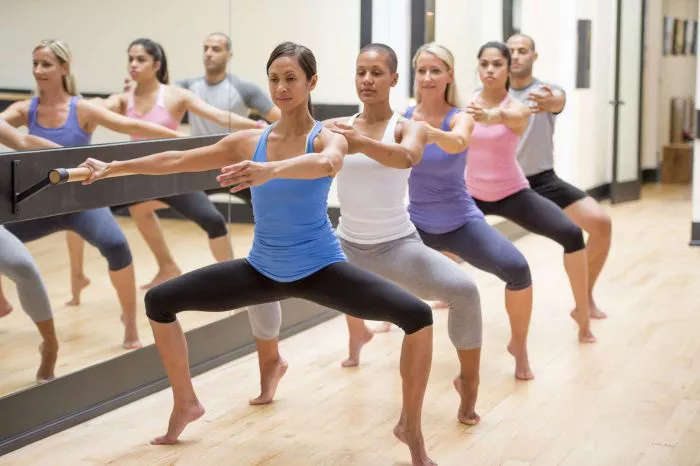Dance is not only a form of artistic expression and cultural heritage but also a fantastic way to burn calories, improve cardiovascular health, and promote weight loss. Whether you’re grooving to the rhythm of hip-hop, salsa, ballet, or any other dance style, you can reap numerous physical and mental benefits while having fun and enjoying the music. In this article, we’ll explore the relationship between dance and weight loss, the calories burned during different dance styles, and how to incorporate dance into your fitness routine effectively.
1. Dance and Weight Loss:
Dance is an excellent form of exercise for weight loss because it combines aerobic activity with strength training and flexibility exercises. Depending on the intensity and duration of your dance session, you can burn a significant number of calories while improving your overall fitness and toning your muscles.
2. Calories Burned During Dance:
The number of calories burned during dance varies depending on factors such as your body weight, the intensity of the dance routine, and the duration of the session. Generally, more vigorous dance styles and longer workouts will result in higher calorie expenditure. Here’s a breakdown of the approximate calories burned per hour for different dance styles:
- Ballet: 200-400 calories
- Hip-Hop: 300-600 calories
- Salsa: 400-700 calories
- Zumba: 400-600 calories
- Jazzercise: 300-500 calories
- Ballroom Dancing: 250-450 calories
- Belly Dancing: 250-400 calories
- Swing Dancing: 300-500 calories
- Latin Dancing (e.g., cha-cha, mambo): 400-600 calories
- Bollywood Dancing: 300-500 calories
3. Factors Affecting Calorie Burn:
Several factors can influence the number of calories burned during a dance workout, including:
- Body Weight: Heavier individuals typically burn more calories during exercise than lighter individuals, as they require more energy to move their bodies.
- Intensity: Higher-intensity dance routines that involve faster movements, jumps, and high-impact steps will burn more calories than lower-intensity routines.
- Duration: Longer dance sessions will result in greater calorie expenditure, provided that the intensity remains consistent throughout the workout.
- Fitness Level: Individuals who are more fit and have greater cardiovascular endurance may burn fewer calories during dance workouts compared to beginners, as their bodies become more efficient at performing the movements.
4. How to Maximize Calorie Burn:
To maximize calorie burn during your dance workouts and promote weight loss, consider the following tips:
- Choose High-Intensity Styles: Opt for dance styles that involve fast-paced movements, jumps, and dynamic choreography to increase your heart rate and calorie expenditure.
- Incorporate Interval Training: Alternate between periods of high-intensity dancing and lower-intensity recovery periods to boost calorie burn and improve cardiovascular fitness.
- Increase Duration: Gradually increase the duration of your dance sessions as your fitness level improves, aiming for at least 30-60 minutes of continuous dancing to maximize calorie expenditure.
- Add Strength Training: Incorporate strength training exercises such as squats, lunges, and planks into your dance routine to build muscle mass, boost metabolism, and enhance overall calorie burn.
- Stay Consistent: Consistency is key to achieving weight loss goals through dance. Aim to dance at least 3-5 times per week to see significant results over time.
5. Additional Benefits of Dance:
In addition to weight loss and calorie burn, dance offers numerous other benefits for physical and mental health, including:
- Improved Cardiovascular Health: Dance can help strengthen the heart and improve circulation, reducing the risk of cardiovascular diseases such as heart attack and stroke.
- Enhanced Flexibility and Range of Motion: Many dance styles involve stretching and dynamic movements that can improve flexibility, mobility, and joint health.
- Stress Relief: Dancing releases endorphins, the body’s natural feel-good hormones, which can reduce stress, anxiety, and depression and improve mood and overall well-being.
- Social Connection: Dance classes and group dance sessions provide opportunities for social interaction, friendship, and community support, which are essential for mental health and happiness.
- Cognitive Benefits: Learning and memorizing dance routines can enhance cognitive function, memory, and coordination, promoting brain health and cognitive longevity.
Conclusion:
Dance is a highly effective and enjoyable form of exercise for weight loss and overall fitness. Whether you prefer salsa, hip-hop, ballet, or any other dance style, you can burn a significant number of calories, improve cardiovascular health, and sculpt your body while having fun and expressing yourself creatively. By choosing high-intensity styles, increasing duration, incorporating interval training and strength training, staying consistent, and enjoying the numerous physical and mental benefits of dance, you can achieve your weight loss goals and lead a healthier, happier lifestyle. So put on your dancing shoes, turn up the music, and get ready to dance your way to a fitter, leaner, and more vibrant you!
Related Topics:
Is 30 minutes on treadmill enough as exercise?


